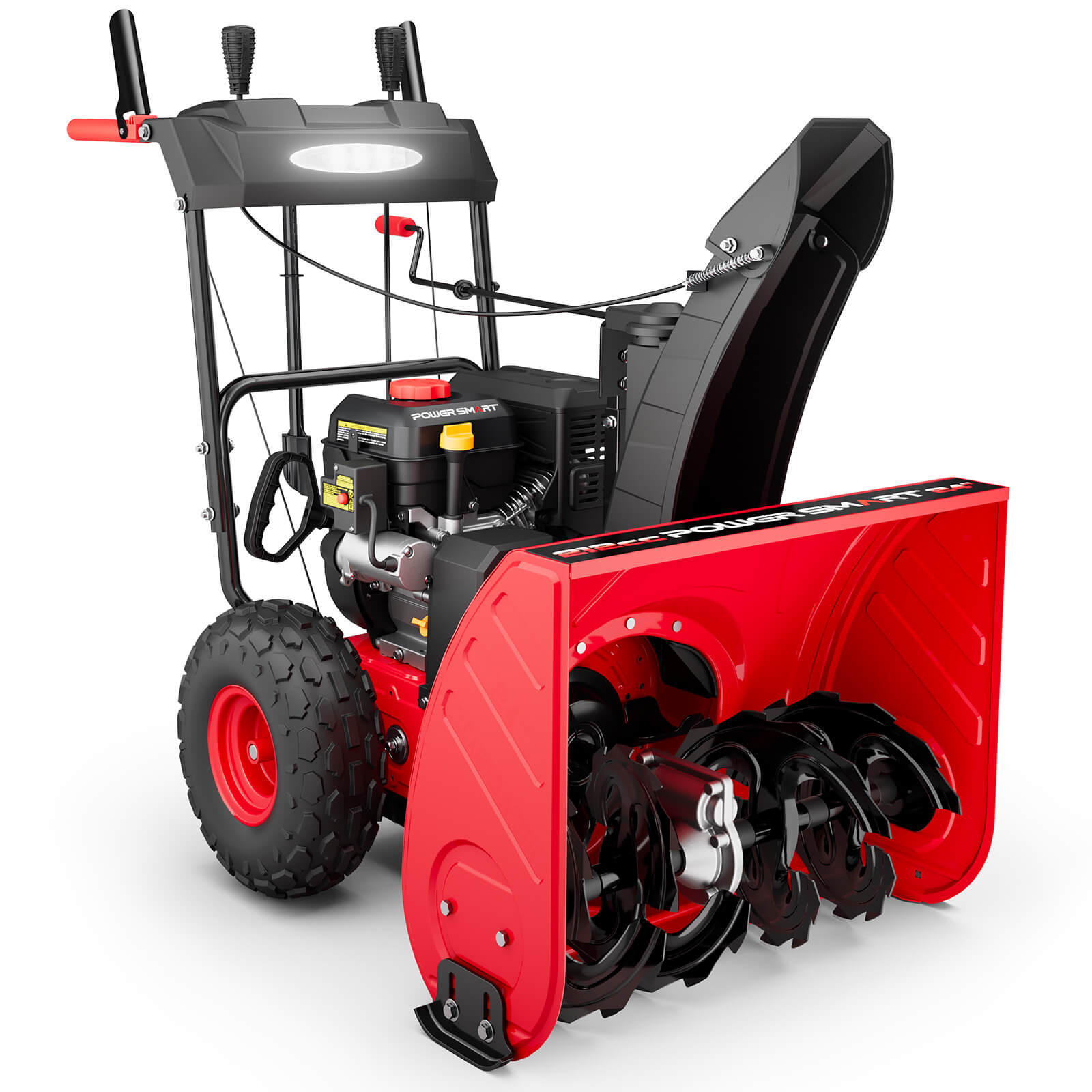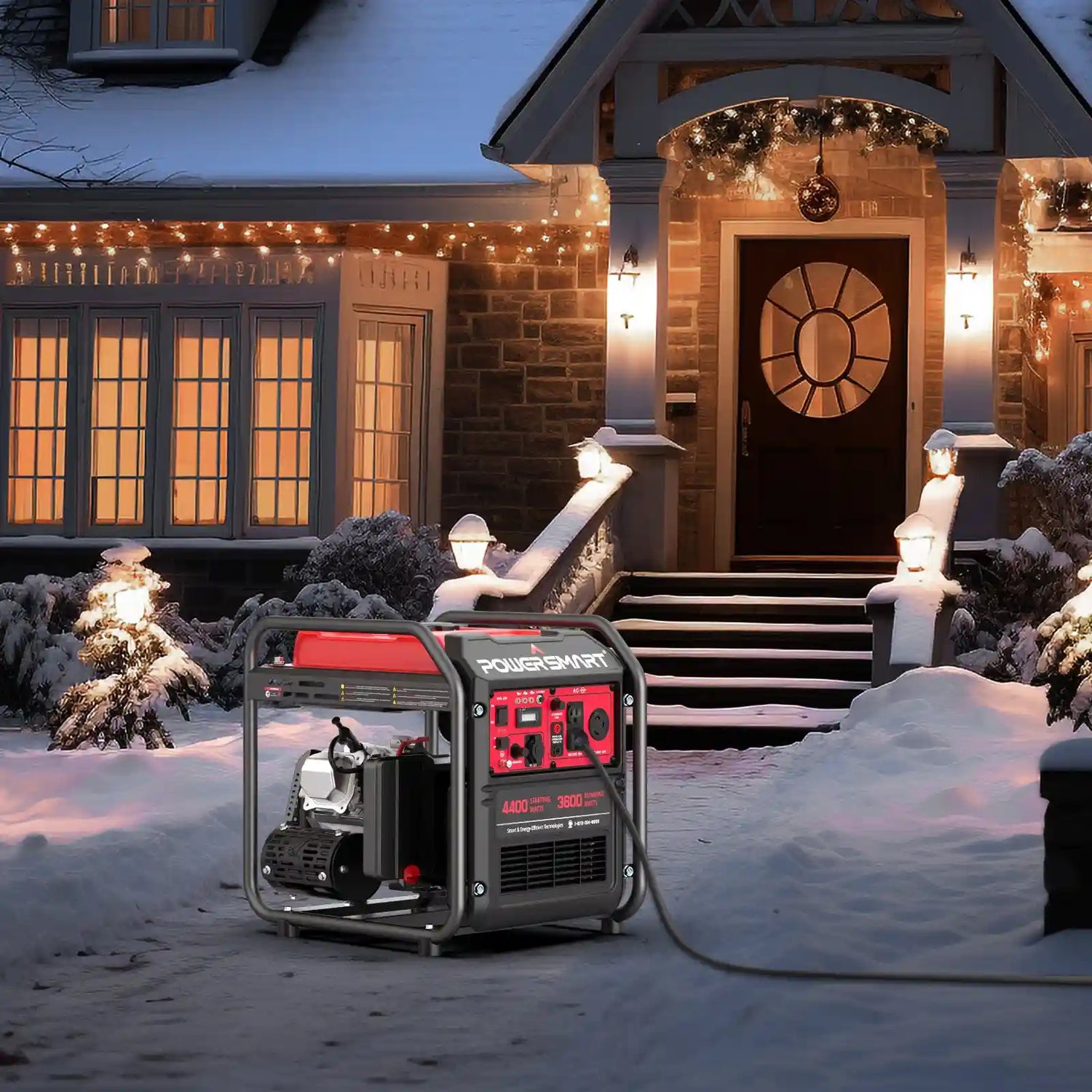Gasoline generators serve as essential power sources during emergencies, outdoor events, and many other uses. As the colder months approach, it is important to prepare and maintain these machines to ensure they perform at their best when needed. Knowing how to winterize a gasoline generator can extend its lifespan, prevent potential damage, and guarantee dependable performance.
Understanding the Importance of Winterizing Your Gasoline Generator
Winterizing your gasoline generator is not just a good practice; it's a necessity. The cold months can introduce various challenges that could severely impact the performance and longevity of your generator. Understanding these factors will motivate you to take the necessary steps to protect your investment.
The Risks of Not Winterizing
Failure to winterize your gasoline generator can lead to several problems. One of the primary risks is fuel degradation. Gasoline can deteriorate over time, especially in cold conditions, leading to poor engine performance and even clogging. Moisture can also accumulate, causing rust and corrosion in the fuel system and engine components. Additionally, batteries can lose their charge more quickly in colder weather, rendering the generator unreliable during power outages.
Benefits of Proper Winter Maintenance
Proper winter maintenance offers a range of benefits. By preparing your generator for the cold months, you ensure that it remains in peak condition, extending its lifespan. Winterization helps maintain fuel efficiency and ensures that the generator starts easily when you need it the most. Moreover, regular maintenance prevents costly repairs, saving you money in the long run. Investing a little time now can pay off greatly by avoiding inconvenient outages and ensuring peace of mind.
Preliminary Steps Before Winterization
Before delving into the specific steps required for winterizing your generator, it's crucial to undertake some initial preparations. These preliminary measures are key to setting the stage for efficient winter maintenance, making sure all critical areas are addressed.
Selecting the Right Time for Winterization
Timing is critical when it comes to winterizing your gasoline generator. Ideally, you should start the process before the first frost. This timing ensures that your generator is ready for any cold snaps that might come unexpectedly. Check the weather forecasts and mark your calendar to ensure you don’t miss this crucial window.
Safety Precautions to Take
Safety should always be your top priority, especially when working with machinery and fuel. Before you start, make sure the generator is turned off and has cooled down completely to avoid burns or other injuries. Wear appropriate protective gear, such as gloves and safety glasses. Ensure you're in a well-ventilated area to prevent inhalation of fumes, and always keep a fire extinguisher nearby for any emergencies.
Step-by-Step Guide to Winterizing Your Gasoline Generator
With the preliminary steps out of the way, you can now focus on the detailed process of winterizing your generator. Follow these step-by-step instructions to ensure your generator is well-prepared for the cold months.
Draining and Replacing Fuel
Why Fuel Replacement is Crucial
Fuel can degrade over time, particularly when the generator remains unused for long durations. This degradation can cause difficulties in starting and negatively impact engine performance. Additionally, ethanol present in gasoline has a tendency to absorb moisture, which can result in phase separation and corrosion. Consequently, changing the fuel is an essential part of the winterization process.
Steps for Draining and Replacing Fuel
To drain the old fuel, locate the fuel valve and turn it to the "off" position. Use a siphon or a fuel transfer pump to remove the fuel from the tank into an approved container. Once the tank is empty, refill it with fresh fuel and add a fuel stabilizer to keep the gasoline from degrading during storage. Run the generator for a few minutes to allow the stabilized fuel to circulate through the system before turning it off.
Cleaning and Inspecting Components
Key Areas to Clean Before Storage
Cleaning your generator before storage helps prevent the buildup of dirt and grime that can cause damage over time. Focus on the air filters, spark plugs, and cooling fins. Use a soft brush or compressed air to remove any debris. Wipe down the exterior surfaces with a damp cloth to remove any accumulated dirt and dust.
Inspection Checklist for Optimal Maintenance
An inspection checklist ensures you don’t miss any critical areas during the winterization process. Check for any signs of wear and tear, such as cracked hoses, loose bolts, or damaged wiring. Inspect the spark plug and replace it if it shows signs of wear. Ensure that the air filter is clean and replace it if necessary. Finally, check the oil level and change it if it's dirty or overdue for replacement.
Battery Maintenance During Cold Months
Removing or Disconnecting the Battery
During winterization, it's crucial to maintain your generator's battery, as cold weather can cause it to lose charge rapidly. For generators with electric starters, you might want to remove the battery and store it separately. Another option is to disconnect the battery terminals to avoid any power drain.
Storing the Battery Correctly
Store the battery in a cool, dry place away from direct sunlight and extreme temperatures. Ideally, use a battery maintainer or trickle charger to keep the battery charged during storage. This practice ensures that the battery remains in good condition and is ready for use when needed.
Checking for Corrosion or Damage
Inspect the battery terminals and connections for any signs of corrosion or damage. Clean the terminals with a mixture of baking soda and water, and use a wire brush to remove any corrosion. Apply a thin layer of petroleum jelly to the terminals to prevent future corrosion. Check the battery case for any cracks or leaks, and replace it if necessary.
Ensuring your gasoline generator is winterized properly will save you from the inconvenience of unexpected failures and costly repairs. By following these essential tips, you can be confident that your generator will be ready to perform reliably when you need it most, even in the harshest winter conditions. For more detailed guidance and quality products, consider checking out PowerSmart, a trusted name in the world of power equipment.
Storing Your Generator Properly
Choosing the Ideal Storage Location
Indoor vs. Outdoor Storage Options
When deciding where to store your gasoline generator during the winter months, you have two main options: indoor and outdoor storage. Indoor storage, such as in a garage or shed, offers better protection against harsh weather conditions. It keeps the generator out of the elements, preventing issues like moisture buildup and rust. Conversely, outdoor storage is feasible if you have a durable, weatherproof cover and a designated spot that is protected from direct exposure to wind, rain, and snow.
Factors to Consider for Indoor Storage
Indoor storage spaces should be well-ventilated to prevent the buildup of potentially harmful fumes. Ensure there is enough space around the generator to perform any needed maintenance tasks. The storage area should also be free from flammable materials and provide easy access to the generator for regular inspections. Keeping these factors in mind will help maintain your generator's longevity and performance.
Protecting Against Moisture and Rust
Covering Your Generator
Whether stored indoors or outdoors, covering your generator is crucial to protect it from dust, moisture, and debris. Invest in a high-quality generator cover that fits snugly over the machine. The cover should be made of durable, waterproof material and should have ventilation flaps to prevent condensation underneath, which can lead to rust and corrosion.
Using Desiccants in Storage Areas
Using desiccants in your storage area is an effective way to control moisture levels and prevent rust. Place silica gel packs or other moisture-absorbing materials around the generator and in its storage space. These desiccants help draw moisture out of the air, creating a drier environment that reduces the risk of corrosion on metal parts and electrical components.
Ensuring Your Generator is Ready for Use After Winter
Pre-use Inspection After Storage
Before you bring your generator back into operation after the winter season, it is crucial to conduct a detailed inspection. Examine all parts for any indications of damage or wear that might have happened while in storage. Look out for oil leaks, damaged hoses, or corroded connections. If the fuel was not drained before storing the generator, make sure it is still in good condition. Additionally, confirm that the battery is fully charged and free from any corrosion. Taking these proactive measures can help prevent operational problems and prolong the lifespan of your generator.
Test Running Your Generator Before Use
Test running your generator before you need it ensures that it will be ready when a power outage occurs. Start the generator and let it run for a few minutes to ensure everything is functioning properly. Listen for any unusual noises and monitor the output to make sure it is generating the correct voltage. This test run will help you identify any issues that need to be addressed before an emergency situation arises.
Additional Tips for Year-Round Maintenance
Regular Maintenance Practices
Routine Checkups and Servicing Intervals
Regular checkups and servicing are vital for keeping your generator in peak condition throughout the year. Schedule routine maintenance based on the manufacturer's recommendations. This typically includes changing the oil, replacing air filters, and inspecting spark plugs. Regular servicing helps ensure that your generator operates efficiently and reliably, reducing the risk of unexpected breakdowns.
Keeping Spare Parts Handy
Having a stock of essential spare parts can save you a lot of hassle in case of a sudden malfunction. Common spare parts to keep on hand include spark plugs, air filters, and oil. These items are relatively inexpensive and easy to replace but can make a significant difference in the performance and reliability of your generator. Being prepared with spare parts ensures minimal downtime during an emergency.
Scheduling Professional Service
When to Seek Expert Help
While numerous maintenance tasks can be handled by the owner, certain circumstances may necessitate professional intervention. If you encounter ongoing mechanical problems, such as challenges with starting, strange sounds, or inconsistent power output, seeking advice from a professional is recommended. Skilled technicians have the ability to identify and resolve issues that might not be obvious to someone without specialized training, thereby guaranteeing that your generator remains dependable in its operation.
Choosing a Reliable Service Provider
Selecting a reliable service provider is crucial for the effective maintenance of your generator. Look for companies with certified technicians and good customer reviews. PowerSmart, for instance, offers professional services and high-quality equipment to meet your power needs. Their expertise in power equipment ensures that your generator receives the best care and maintenance, enhancing its performance and longevity.
Knowing how to winterize a gasoline generator and performing regular maintenance will keep your generator ready for any situation. Proper storage, routine checkups, and professional servicing are all integral parts of a comprehensive maintenance plan. By following these guidelines, you can ensure that your generator will be dependable year-round, providing you with peace of mind during the cold months. For top-notch products and expert advice, visit PowerSmart’s website, where you’ll find everything you need to maintain and enhance your power equipment.







Leave a comment
All comments are moderated before being published.
This site is protected by hCaptcha and the hCaptcha Privacy Policy and Terms of Service apply.